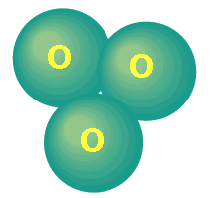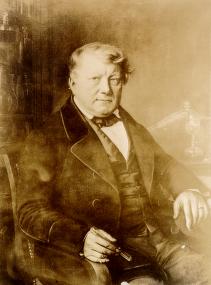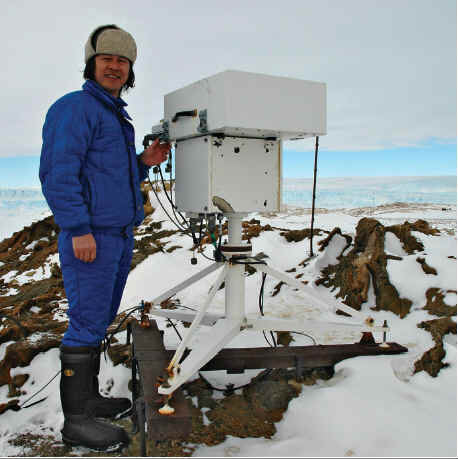|
Ozone
named from the Greek "ozein" for smell. Pronunciation: 'O-"zOn Function: noun Etymology: German Ozon, from Greek ozOn, present participle of ozein to smell
Ozone is a molecule that contains three atoms of oxygen and thus has the formula O3.
Ozone was first discovered in 1839 by German scientist Christian Friedrich Schonbein.
Ozone is a molecule made up of three oxygen atoms which is naturally formed by the photolysis of normal oxygen by ultraviolet solar radiation at wavelengths below 242.5 nm in the stratosphere. A certain amount of ozone is also produced in the troposphere in a chain of chemical reactions involving hydrocarbons and nitrogen-containing gases. Though ozone is a minor atmospheric constituent, with an average concentration of about 3 parts per million volume (ppmv), the radiation properties of this greenhouse gas make it a significant contributor to the radiative energy balance of the atmosphere, and an important regulator of the ultraviolet solar radiation received at the Earth's surface. Most of the atmospheric ozone (90 per cent) is located in the stratosphere with a maximum concentration of between 17 and 25 km , depending on latitude and season, where its presence causes stratospheric temperature inversion and results in maximum temperature at the stratopause. In addition to its radiation properties, ozone reacts with many other trace species, some of which are anthropogenic in origin. The geographical and vertical distributions of ozone in the atmosphere are determined by a complex interaction of atmospheric dynamics and photochemistry.
Ozone near the ground is monitored because it is a product of industrial and urban pollution. Measurements of tropospheric and stratospheric ozone are used for the verification of models that simulate the photochemistry or general circulation of the real atmosphere. Ozone is also measured to determine attenuation of the ozone layer by man.made gases, to validate model estimations of changes in ozone and to confirm the efficiency of the Montreal Protocol on Substances that deplete the Ozone Layer and its Amendments. This monitoring of the ozone layer requires high.quality, long-term records of ozone at stations with well-maintained instruments, which are crucial for reliable trend analyses.
A member of the Zhong Shan station crew with the Brewer spectrophotometer.
There are basically three characteristics of atmospheric ozone that are routinely measured and reported by ground and satellite monitoring systems, namely: (a) Surface ozone; (b) Total ozone; (c) The vertical profile of ozone.
The following are definitions of other terms used frequently in this context:
|






